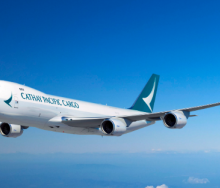The outlook for the global airline industry is looking positive for 2020 with the International Air Transport Association (Iata) forecasting a net profit of $29.3 compared to the $25.9 billion expected in 2019
This was revised downward from the $28 billion forecast in June.
If achieved, 2020 will mark the industry’s 11th consecutive year in the black. – but not thanks to cargo performance which failed to deliver. Cargo traffic turned negative last year for the first time since 2012 – and the 3.3% annual decline in demand was the steepest drop since 2009 during the global financial crisis.
Cargo revenues will slip for a third year in 2020 with revenues expected to total $101.2 billion, down 1.1% from 2019, according to Iata.
“Slowing economic growth, trade wars, geopolitical tensions and social unrest, plus continuing uncertainty over Brexit all came together to create a tougher-than-anticipated business environment for airlines. Yet the industry managed to achieve a decade in the black, as restructuring and cost-cutting continued to pay dividends,” said Alexandre de Juniac, Iata’s director general and CEO. “It appears that 2019 will be the bottom of the current economic cycle and the forecast for 2020 is somewhat brighter. The big question for 2020 is how capacity will develop, particularly when, as expected, the grounded 737 MAX aircraft return to service and delayed deliveries arrive.”
The regional profit picture is mixed in both 2019 and 2020. Africa, Middle East and Latin America are all expected to lose money in 2019, with carriers in Latin America returning to profit in 2020 as regional economies strengthen.
African carriers continue to suffer structural problems of high costs—in large part owing to government taxes and fees--and low load factors, says Iata. “Economic growth in the region has been relatively good and is expected to rise in 2020, but markets are extremely fragmented and inefficiently served in the absence, so far, of a Single African Air Transport Market. As a result, they are projected to show a loss of $200 million, similar to 2019.”













